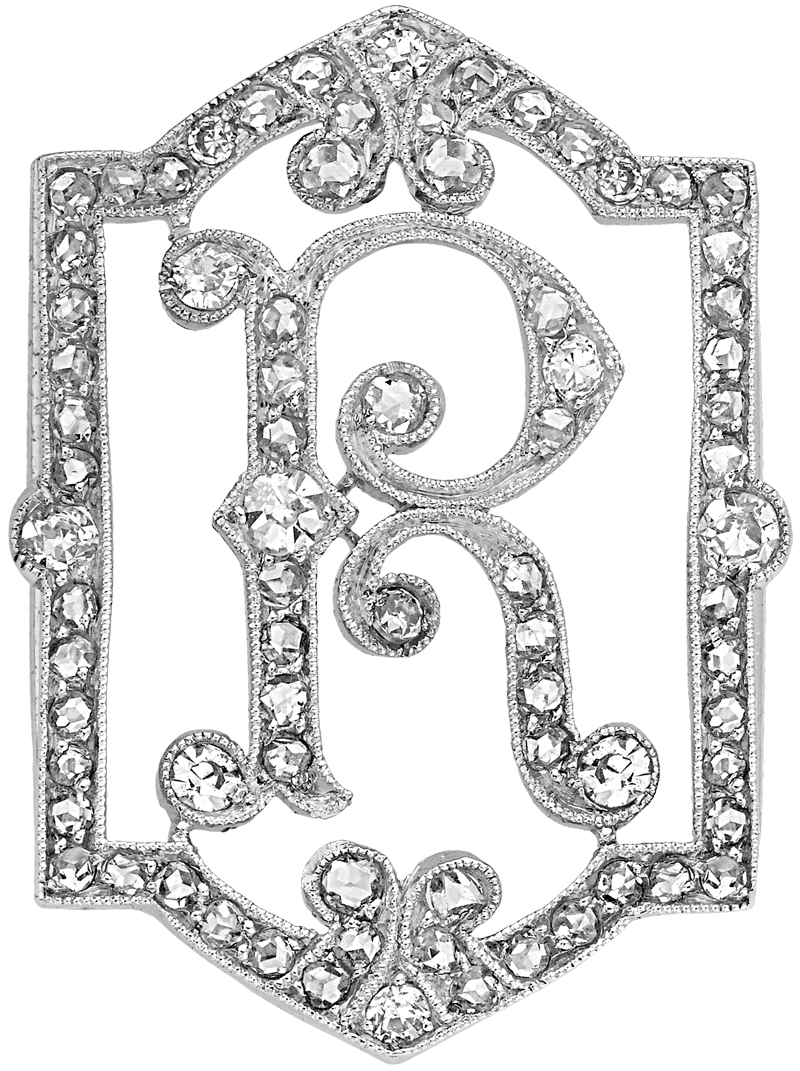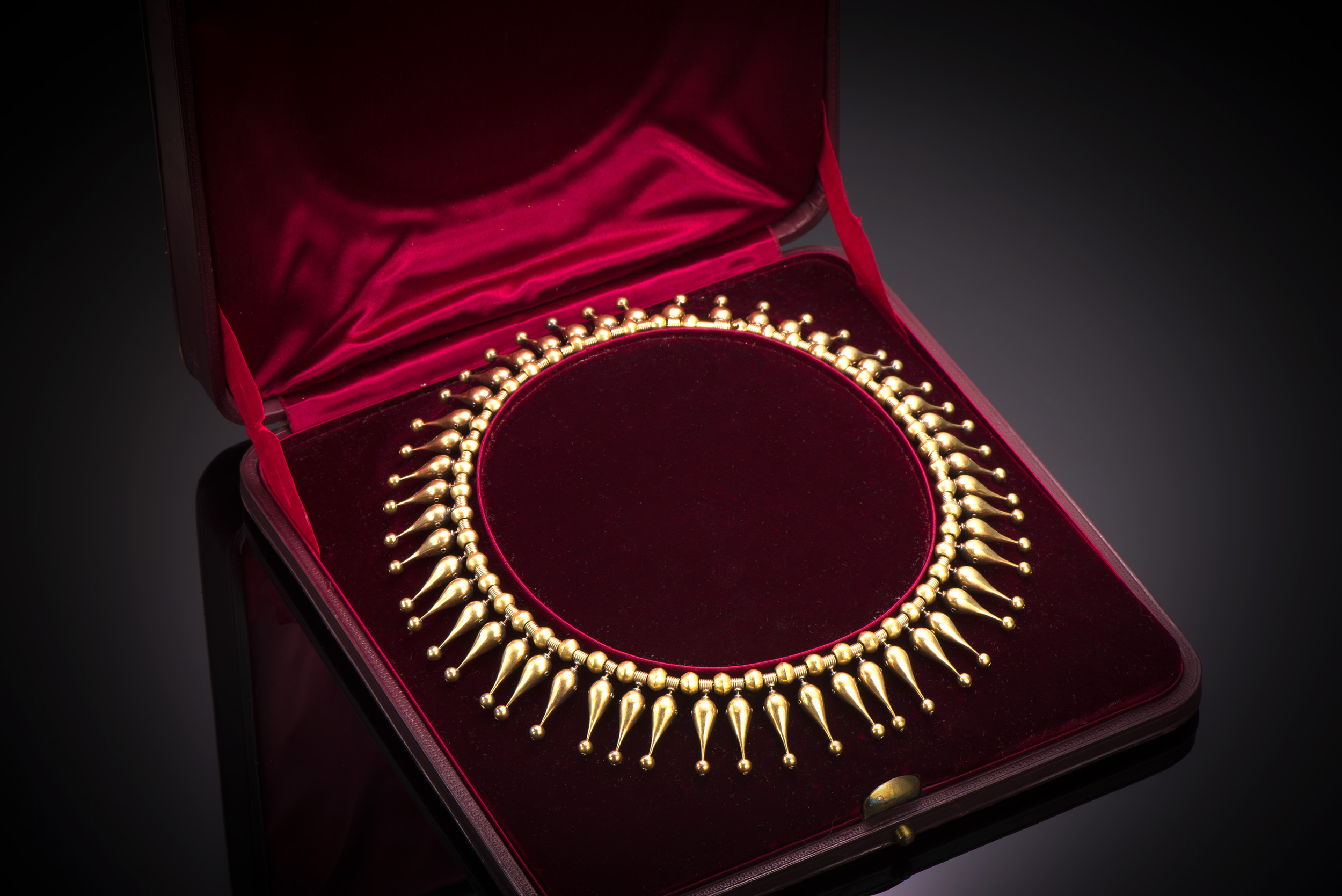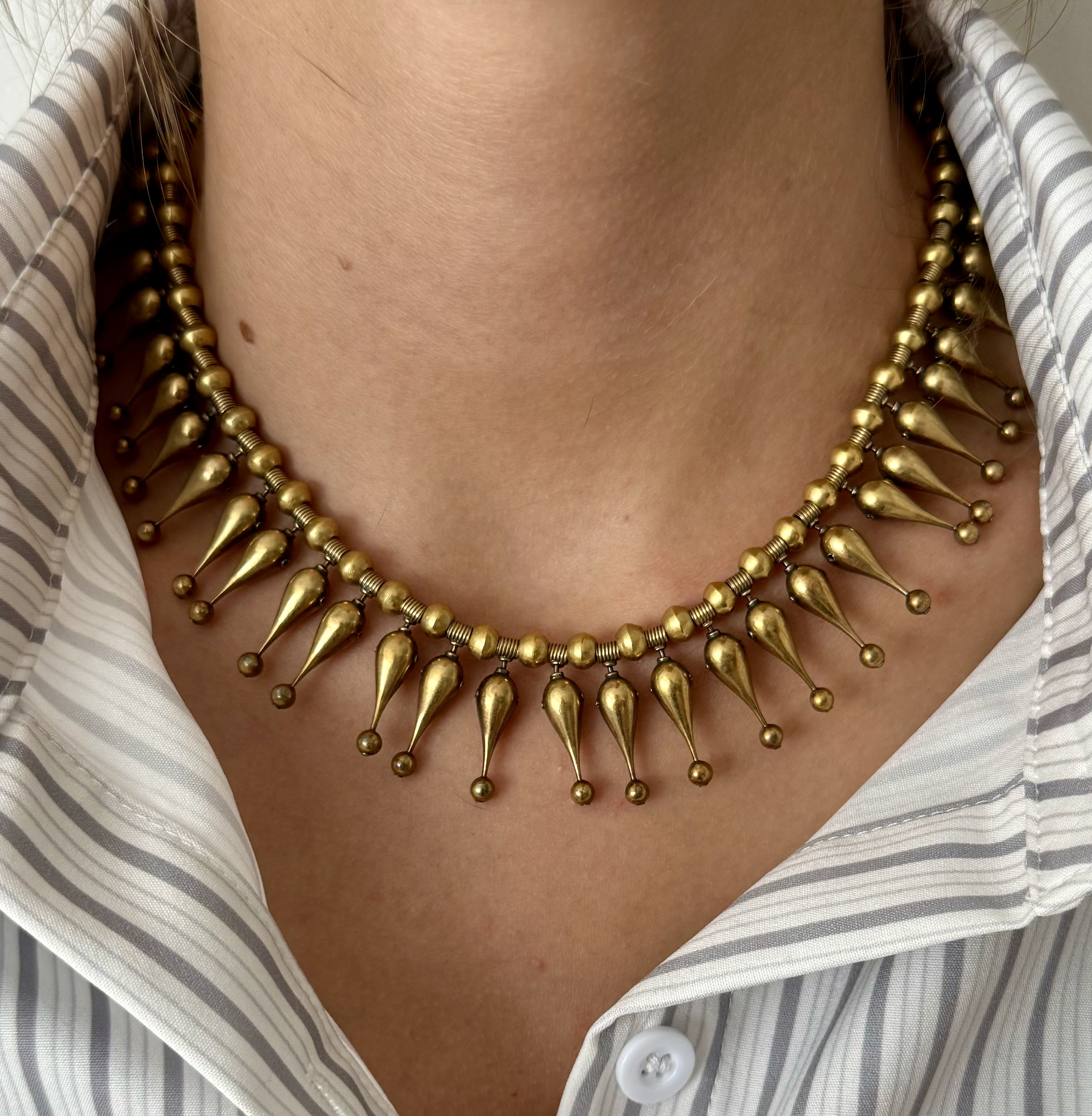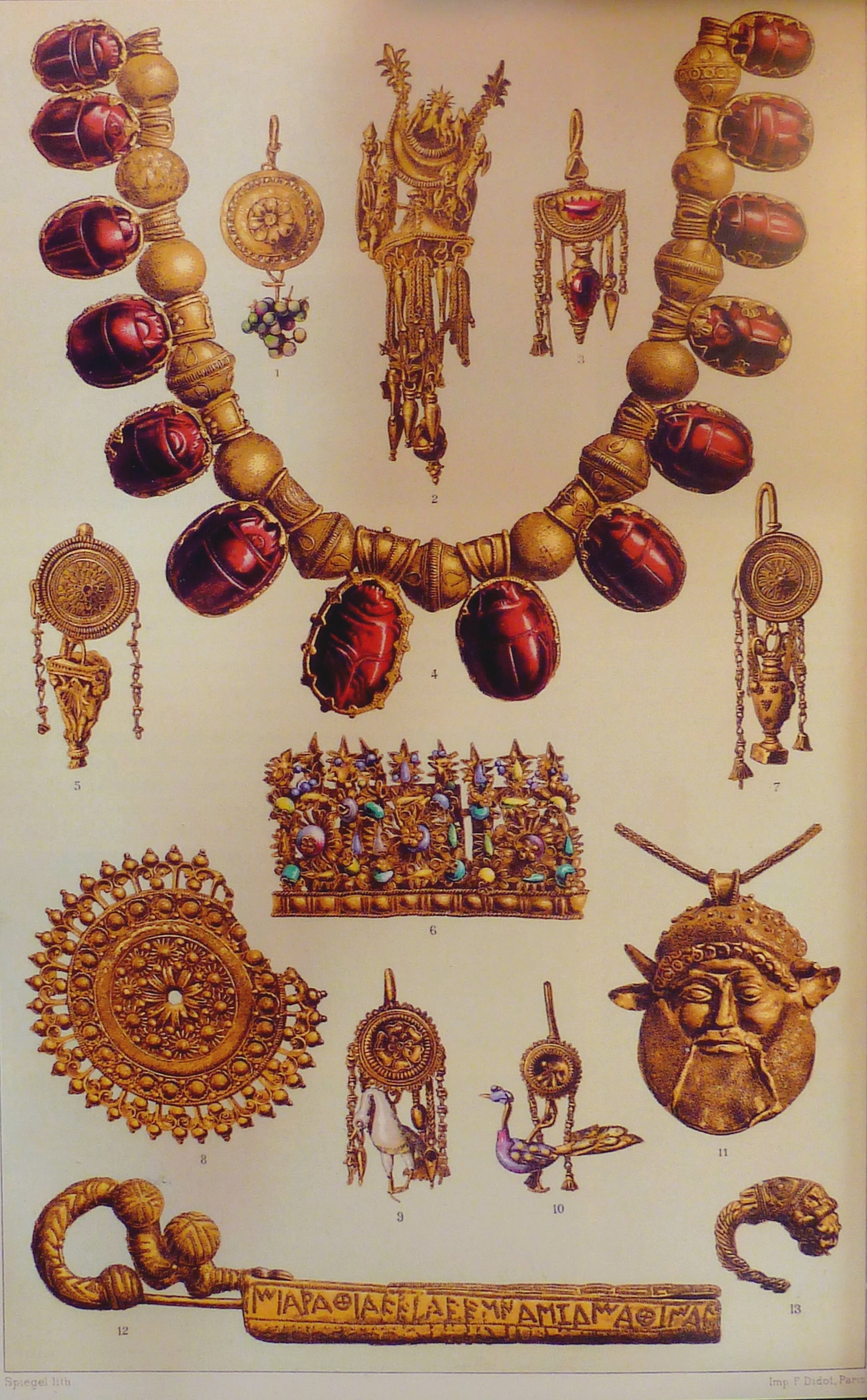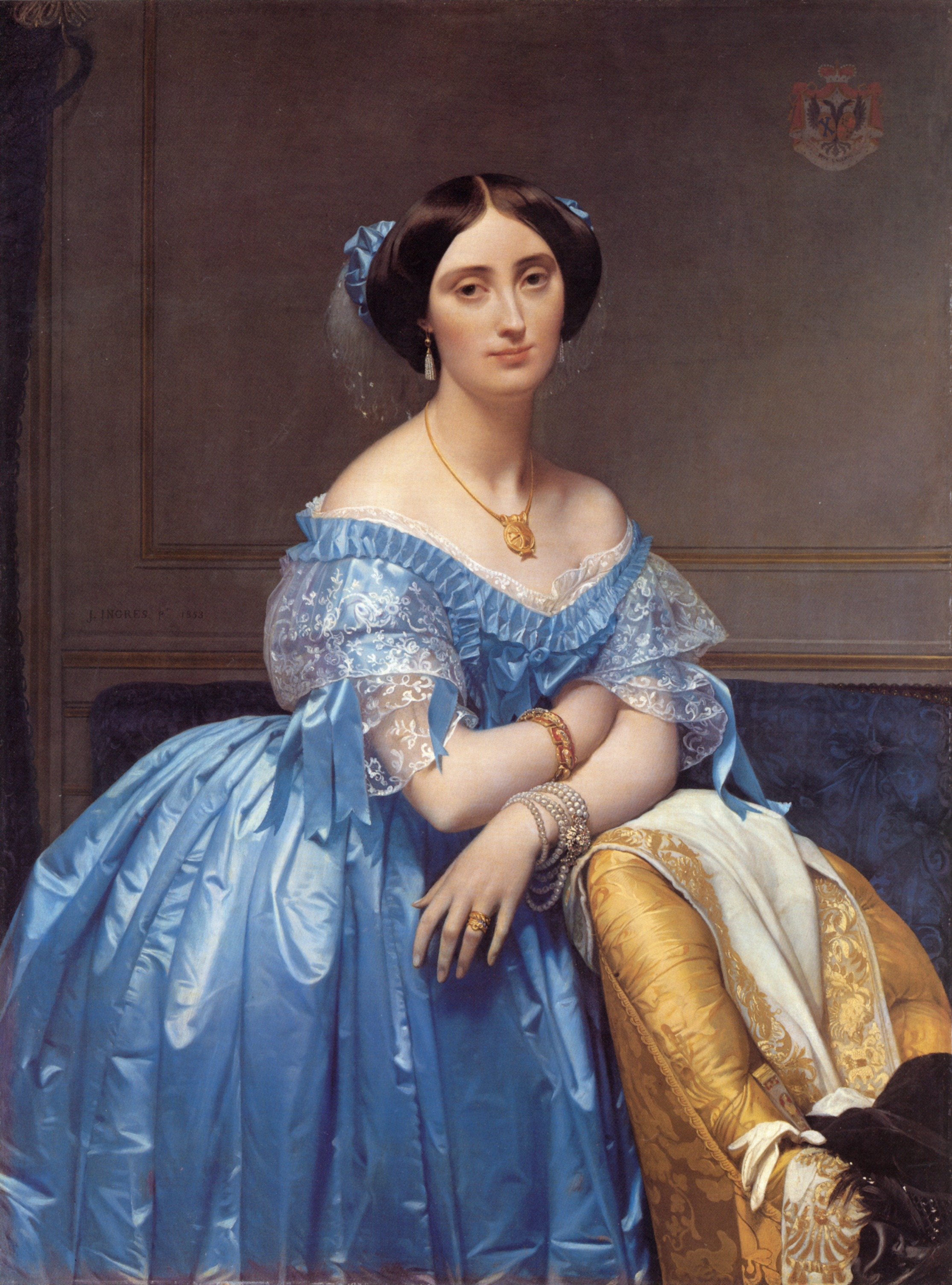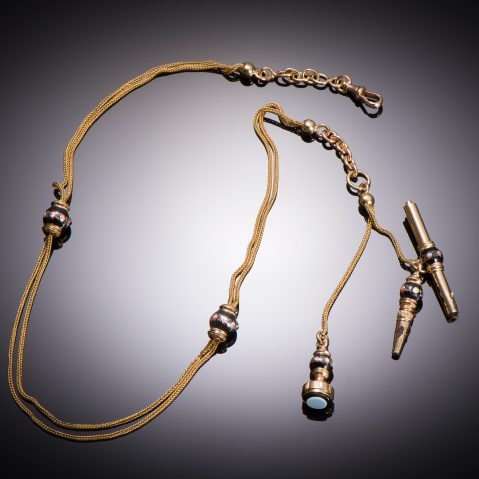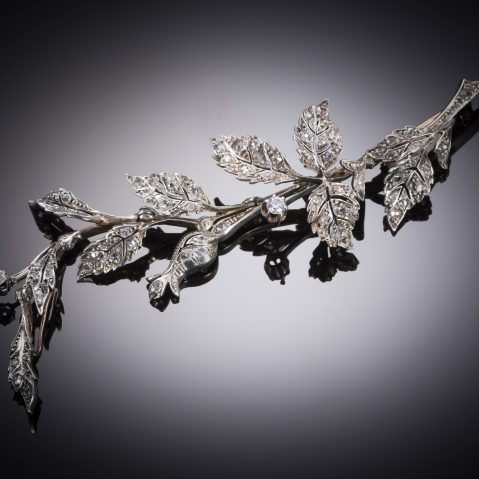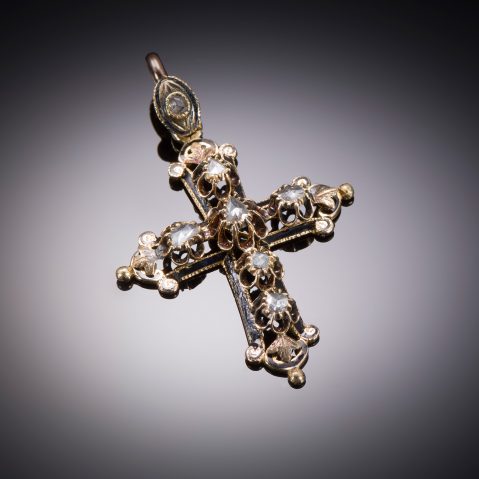Maison Caillot et Peck: Important neo-Etruscan gold necklace in its case circa 1865
Pierre Caillot, jeweler, arrived in Paris in 1820 and set up his own workshop in 1825. Helped by his son Jacques, he quickly found success. In 1849, Prosper Peck joined them, giving birth to Maison Caillot et Peck. This association marked the beginning of the creation of jewelry in the Etruscan fashion.
The public’s enthusiasm for the arrival in France of the fabulous Campana collection at the Louvre Museum reinforced the Etruscomania already active since the end of the 18th century and the first major discoveries of Etruscan tombs. The European aristocracy was crazy about the jewels marketed by the Castellani workshops. The great French jewelers, like Eugène Fontenay, then launched into the production of jewelry in the Campanian fashion. A similar necklace is also presented at the Museum of Fine Arts of the city of Paris, in the Petit Palais.
The Maison Caillot et Peck obtained a medal of honor at the Universal Exhibition of 1862 in London. In 1874, the house, one of the most prosperous in Paris, joined forces with the Guillemin brothers and took the name of Caillot, Peck and Guillemin brothers. It obtained a gold medal at the Universal Exhibition in Paris in 1878.
Maker’s mark: letters « C » and « P » (for Caillot et Peck) separated by a dove of the Holy Spirit and a heart in a vertical diamond on the top of the hook
Length: 40 cm
Width: 2.5 cm
Gross weight: 60.20 grs
Additional photos:
Etruscan art, by Jules Martha 1889. Plate showing jewelry from the Campana collection.
Princess de Broglie wearing Etruscan-style jewelry, painting by Jean-Auguste Dominique Ingres (1853).
